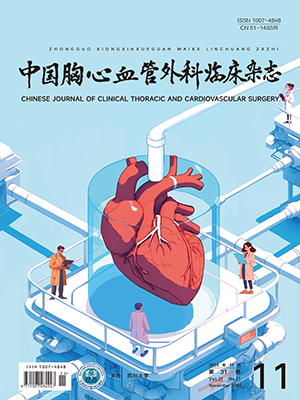Objective To evaluate the feasibility to fabricate tissue engineered heart valve leaflet with poly hydroxybutyrate co hydroxyvalerate (PHBV) scaffold. Methods Constructive characteristics of PHBV were observed by scanning electron microscope. PHBV was implanted subcutaneously in rabbit and extirpated at 2,4,6,8, and 10 weeks in order to study its biocompatibility and biodegradability. Cell growth curve, smooth muscle α actin and ultra microscopic characteristics were observed in canine aortic valve interstitial cells. The cells were seeded on the PHBV and their function of prostaglandin I 2 (PGI 2) synthesis was determined. Results Porous diameter of PHBV was 130μm, PHBV had good biocompatibility and completely degraded at the end of the 10th week. Smooth muscle α actin were expressed in canine aortic valve interstitial cells and grew well. Cells implanted on PHBV grew well, PGI 2 were synthesized and secreted( P lt;0.05). Conclusion It is feasible to fabricate a tissue engineering heart valve leaflet in vitro with PHBV scaffold.
Citation: 周栋,汪钢,赵东锷,等. In vitro experience in tissue engineering heart valve with poly-hydroxybutyrate-co-hydroxyvalerate. Chinese Journal of Clinical Thoracic and Cardiovascular Surgery, 2004, 11(2): 116-119. doi: Copy




